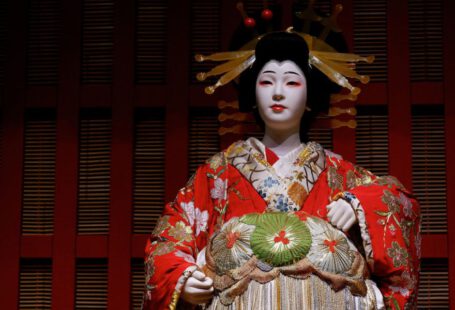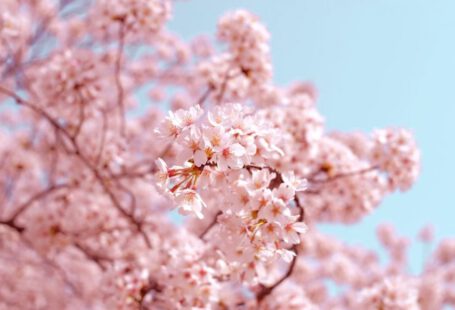Japan, a country known for its rich cultural heritage and traditions, is home to a plethora of fascinating customs that have been passed down through generations. From bowing as a form of greeting to removing shoes before entering homes, Japanese customs offer a glimpse into the values and beliefs of this unique and captivating society.
One of the most well-known Japanese customs is bowing. Unlike the Western practice of shaking hands, the Japanese greet each other by bowing. This gesture, which varies in depth depending on the situation, is a sign of respect and politeness. Whether it’s a formal business meeting or a casual encounter with a friend, bowing is an integral part of Japanese social interaction.
Another custom deeply ingrained in Japanese society is the removal of shoes before entering homes and certain establishments. This practice stems from the belief that shoes carry dirt and impurities from the outside world. By taking off their shoes, the Japanese not only maintain cleanliness but also demonstrate their respect for the space they are entering. Slippers are often provided as an alternative to walking barefoot, further emphasizing the importance of keeping the floors clean.
Tea ceremonies, known as “sado” or “chado,” are another significant Japanese custom. These ceremonies, rooted in Zen Buddhism, are a ritualistic way of preparing and serving tea. Every step, from the precise movements of the tea utensils to the carefully chosen tea leaves, is performed with grace and mindfulness. Participating in a tea ceremony is not only an opportunity to savor the flavors of matcha tea but also a chance to experience tranquility and harmony.
The concept of “omotenashi,” meaning wholehearted hospitality, is deeply embedded in Japanese culture. Whether it’s in a restaurant, hotel, or even a casual encounter, providing exceptional service is a fundamental aspect of Japanese customs. From the moment you enter an establishment, you are greeted with a warm smile and impeccable attention to detail. Waiters and waitresses go above and beyond to ensure your satisfaction, anticipating your needs before you even have to ask. This dedication to customer service is a testament to the Japanese commitment to excellence.
Japanese cuisine is renowned worldwide for its delicate flavors and artistic presentation. However, it is not just the taste and appearance of the food that makes it unique. The act of saying “itadakimasu” before a meal and “gochisosama deshita” after a meal reflects the gratitude and respect the Japanese hold towards their food. By acknowledging the effort that went into its preparation, they show appreciation for the nourishment they are about to receive.
Harmony and respect for others are deeply valued in Japanese customs, and this is evident in the practice of “wa,” meaning harmony. Whether it’s in the workplace or within the family, maintaining harmony is paramount. Japanese people strive to avoid confrontation and prioritize the collective well-being over individual desires. This emphasis on harmony is reflected in the beautiful art of flower arrangement, known as “ikebana,” where each stem and petal is carefully placed to create a harmonious composition.
In conclusion, Japanese customs offer a fascinating glimpse into the values and beliefs of this captivating culture. From bowing as a sign of respect to removing shoes before entering homes, these customs reflect the importance of politeness, cleanliness, and mindfulness in Japanese society. Whether it’s participating in a tea ceremony, experiencing exceptional hospitality, or savoring the flavors of Japanese cuisine, immersing oneself in these customs is a remarkable way to appreciate the rich cultural heritage of Japan.





